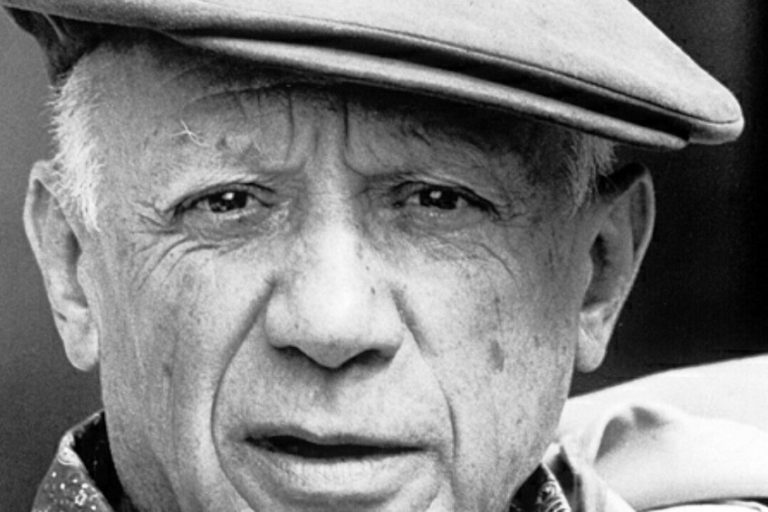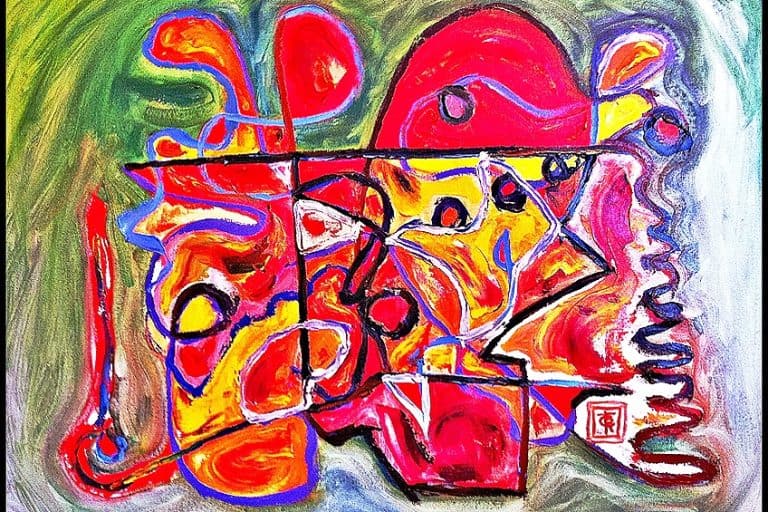Annie Cabigting – Reflections in Paint
Annie Cabigting is a contemporary Filipino artist renowned for her hyper-realistic paintings that meticulously recreate iconic artworks and scenes from art history. Born in 1971, Cabigting’s work often explores themes of perception, replication, and the role of the viewer, prompting a dialogue between the original piece and its reinterpreted version. Her canvases are characterized by their precise attention to detail and uncanny ability to evoke the essence of the source material while simultaneously inviting contemplation on the nature of art itself. By bridging the gap between the past and the present, Cabigting’s oeuvre offers a thought-provoking commentary on the ongoing evolution of artistic expression and appreciation.
Key Takeaways
- Annie Cabigting is a renowned Filipino contemporary artist.
- Her recent exhibition at the Metropolitan Museum of Manila showcases her artistic precision.
- She explores themes of appropriation and the observer-observed relationship in her work.
Early Life and Education
| Birth | 1971 |
|---|---|
| Death | Present |
| Place of Birth | Manila, Philippines |
| Genre of Work | Painting and contemporary art |
Annie Cabigting stands as one of the most compelling contemporary artists from the Philippines. Having been born in Makati City in 1971 and currently residing in Quezon City, she continues to leave an indelible mark on the art world with her unique exploration of appropriation and artistic perception. Her works, often centered on the relationship between the observer and the observed, challenge viewers to see familiar objects and scenes in new and thought-provoking ways. Cabigting’s exhibitions, such as her recent showcase at the Metropolitan Museum of Manila, curated by Nilo Ilarde, highlight her meticulous method and mastery over detail and control.
Her paintings not only reflect technical skill but also a deep conceptual engagement with the art itself. This reflective approach invites audiences to experience a dialogue between the artwork and its interpretation. Her prominence in the contemporary art scene is further emphasized through her successful sales and wide exposure, with pieces featured in various esteemed galleries and auctions globally. Annie Cabigting’s artwork continues to inspire and intrigue, cementing her place as a significant figure in modern art.
University of the Philippines
Cabigting pursued her higher education at the University of the Philippines, College of Fine Arts. Known for its rigorous and comprehensive curriculum, the University played a critical role in shaping her foundational skills. At the University, she honed her technical abilities, exploring various mediums and techniques. The institution’s emphasis on both traditional and contemporary art forms allowed her to develop a diverse artistic vocabulary.
This diverse training is evident in her distinctive style and meticulous approach to art.
Mentorship Under Roberto Chabet
While studying at the University of the Philippines, Cabigting’s artistic development was profoundly influenced by her mentorship under Roberto Chabet. Chabet, a pioneering figure in Filipino contemporary art, recognized Cabigting’s potential early on and provided her with invaluable guidance.
Under Chabet’s mentorship, she learned to experiment with conceptual art and to challenge traditional boundaries. His emphasis on critical thinking and innovation significantly impacted her artistic philosophy. This mentorship not only refined her technical skills but also instilled in her a deeper appreciation and understanding of the conceptual dimensions of art.
Artistic Career
Annie Cabigting’s career is marked by her detailed photorealist paintings, significant solo exhibitions, and numerous contributions to contemporary art group shows. Her works often investigate themes of appropriation and observation.
Thematic Exploration in Artworks
Cabigting’s art frequently centers on the concept of appropriation. This thematic focus is evident in works like Conditions of the Feminine (2019) and 100 Pieces, Tearing to Pieces (After Roberto Chabet) (2005). In these paintings, she re-contextualizes existing artworks, exploring the relationships between viewers and art objects. Her photorealist style underscores an acute attention to detail, as seen in her depictions of people observing art. This approach invites viewers to engage with the act of looking, transforming passive observation into active participation.
Significant Solo Exhibitions
Cabigting has held impactful solo exhibitions that highlight her mastery over control and artistic expression. A notable exhibition is her latest show displayed at the MET in BGC until April 2024, which features her photorealist paintings. She has also exhibited at the Finale Art File and Gajah Gallery.
These shows typically emphasize her meticulous compositions and the conceptual underpinnings of her work, cementing her status as a key figure in contemporary Filipino art.
Contributions to Group Exhibitions
In addition to her solo work, Cabigting has made significant contributions to numerous group exhibitions. Her participation in the Prague Biennale showcases her recognition on an international stage. Locally, her works have been featured in group shows at prominent venues like the Ateneo Art Awards. These exhibitions provide a broader context for her oeuvre, allowing her to engage in a dialog with other contemporary artists and expand her influence within the art world.

Themes and Styles
Annie Cabigting’s work primarily revolves around the concepts of appropriation and the act of looking. Her photorealist paintings detail viewers engaging with art, highlighting the relationship between the artwork, the viewer, and the artist’s intentions.
Appropriation and Institutional Critique
Cabigting investigates the concept of appropriation in her art. She meticulously studies and reinterprets iconic artworks, challenging notions of originality and authorship. Through this, she critiques the institutional frameworks that define and control the art world. Her work questions who has the authority to designate something as “art” and how this impacts its reception.
This examination extends to how art is consumed and valued within galleries and museums.
By reproducing renowned pieces, Cabigting not only showcases her technical skill but also invites viewers to reconsider the meaning and importance of these works in a contemporary context. This approach makes her a significant figure in the discourse on institutional critique within contemporary art.
People Looking at Art
Cabigting’s photorealist paintings often depict people observing art, thus turning the viewer into the subject. This unique focus delves into the act of looking and the relationship between art and its audience. By illustrating this interaction, she blurs the lines between observer and participant, making the viewer part of the artwork.
Her precise, detailed style reveals a deep commitment to capturing these moments. Each painting becomes a narrative about the act of viewing. This emphasis on the viewer’s role underscores the dialogic nature of art, highlighting how the presence and interpretation of the viewer complete the work.
In essence, her work is a thoughtful exploration of how art is experienced, emphasizing the political and personal significance of this interaction.
Exposure and Impact
Annie Cabigting has established a significant presence in both local and international art scenes, recognized for her unique focus on the viewer’s relationship with art. Her works are frequently featured in prominent museums and galleries, and her exhibitions often reflect a deep understanding of art history and photorealism.
Presence in Museums and Galleries
Annie Cabigting’s art has been showcased in various notable venues across the globe. In the Philippines, her exhibitions at the Metropolitan Museum of Manila (M) in Bonifacio Global City accentuate her central themes, such as in shows like When We Look at Art.
Beyond the Philippines, her work has also been displayed in cities such as Singapore and Berlin, particularly at galleries like Arndt Berlin.
Her meticulous photorealist paintings, often depicting people viewing famous artworks, have garnered attention and respect in Europe and Asia. This wide exposure not only highlights her technical prowess but also places her art within a broader conversation about the role of the viewer in the experience of art itself.
Influence and Reception
Cabigting’s influence extends beyond her gallery presence. Her work often examines the interplay between the artwork and the observer, challenging the conventional roles in art appreciation. This thematic exploration resonates deeply with critics and art enthusiasts alike, offering a fresh perspective on traditional art history narratives.

Her exhibitions, such as group shows and solo exhibitions, frequently praise her ability to capture intricate details and the essence of other artists’ works. The thematic relevance and technical mastery of her pieces attract considerable interest from auction houses, where her works are often sold at notable prices. Cabigting’s contributions continue to shape contemporary discourse on art viewing and appreciation, solidifying her role as a prominent figure in both local and international art communities.
Annie Cabigting’s body of work stands as a testament to the power of art to transcend time and space, engaging audiences in a perpetual dialogue with the past while anchoring them firmly in the present. Through her masterful technique and thoughtful reinterpretations, she not only pays homage to the great masters but also challenges viewers to reconsider their perceptions of originality and authenticity. Cabigting’s art invites us to delve deeper into the layers of meaning behind each recreated masterpiece, fostering a greater appreciation for the intricate connections that bind the history of art to our contemporary experience. In doing so, she solidifies her place as a significant and innovative figure in the global art landscape.
Frequently Asked Questions
What Significant Themes Are Often Explored in the Artworks of Annie Cabigting?
Annie Cabigting frequently investigates the concept of appropriation. Her paintings often depict people observing art, emphasizing the viewer’s role in the experience. This theme underscores the relationship between the observer and the art piece itself, bringing a unique perspective to contemporary art.
How Has Annie Cabigting Contributed to the Contemporary Art Scene in the Philippines?
Annie Cabigting has made substantial contributions to the contemporary art scene in the Philippines through her photorealist paintings and unique focus on viewer interaction. Residing and working in Quezon City, she continuously explores themes that challenge traditional notions of art and observation.
Which Notable Exhibitions Have Featured the Works of Annie Cabigting?
Annie Cabigting’s works have been showcased in various significant exhibitions worldwide. Her exhibitions have featured compelling interpretations of masterpieces by artists like Jackson Pollock, Mark Rothko, and Chuck Close. This demonstrates her ability to merge classical art with contemporary contexts.
How Do Art Critics Typically Interpret Annie Cabigting’s Use of Appropriation in Her Paintings?
Art critics recognize Annie Cabigting’s use of appropriation as a meticulous and thoughtful exploration of existing artworks. Her approach not only shows technical skill but also invites deeper reflections on the act of viewing and interpreting art. Critics appreciate her ability to breathe new life into familiar artworks through her unique approach.
Isabella studied at the University of Cape Town in South Africa and graduated with a Bachelor of Arts majoring in English Literature & Language and Psychology. Throughout her undergraduate years, she took Art History as an additional subject and absolutely loved it. Building on from her art history knowledge that began in high school, art has always been a particular area of fascination for her. From learning about artworks previously unknown to her, or sharpening her existing understanding of specific works, the ability to continue learning within this interesting sphere excites her greatly.
Her focal points of interest in art history encompass profiling specific artists and art movements, as it is these areas where she is able to really dig deep into the rich narrative of the art world. Additionally, she particularly enjoys exploring the different artistic styles of the 20th century, as well as the important impact that female artists have had on the development of art history.
Learn more about Isabella Meyer and the Art in Context Team.
Cite this Article
Isabella, Meyer, “Annie Cabigting – Reflections in Paint.” Art in Context. August 11, 2024. URL: https://artincontext.org/annie-cabigting/
Meyer, I. (2024, 11 August). Annie Cabigting – Reflections in Paint. Art in Context. https://artincontext.org/annie-cabigting/
Meyer, Isabella. “Annie Cabigting – Reflections in Paint.” Art in Context, August 11, 2024. https://artincontext.org/annie-cabigting/.











